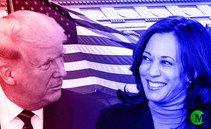The Fed’s 50 basis point rate cut has hit markets, raising questions about the real meaning of such an aggressive move. What do investors expect?

The Fed rate cut came with a 50 basis point reduction that didn’t entirely surprise markets, but is already making investors question the real meaning of this aggressive move: did the central bank start its rate-cut cycle in time to prevent the economy from slowing too quickly, for fear of a recession, or is it simply a sign that inflation is close to 2%?
The euphoria over the first and long-awaited rate cut by the world’s most influential central bank faded before Wall Street closed the session. Specifically, US stocks initially jumped after the Fed announcement. However, markets ended lower on concerns about a potential economic recession.
From stocks to Treasuries, corporate bonds to commodities, every major asset fell on Wednesday. While the magnitude of the declines was small, some analysts noted that such a retreat from gains has not followed a Fed policy decision since June 2021.
Of particular concern to traders were Powell’s comments that coincided with a turnaround in stock and bond markets: no one should expect the Fed to make a habit of cutting rates by half a point going forward and that the neutral level of interest rates is likely higher than it was before the pandemic.
EUR/USD is holding above 1.1100, with the dollar weakening slightly on the Fed’s move. The price of gold has risen above $2,600. Concerns about the economic slowdown, along with geopolitical risks, are supporting the commodity.
On a day also focused on the Bank of England meeting, markets today continue to ponder the meaning of the Fed decision. What can investors expect?
What the Fed’s Rate Cut Means for Markets? Experts Respond
The prospect of a “soft landing”, in which the Fed reduces inflation without pushing the economy into recession, has boosted stocks and bonds this year, even as signs of a tightening labor market have fueled concerns that the Fed may have been late with its first easing.
Powell has denied that, but a day after the central bank’s decision, market experts are wondering how to read the move to cut by 50 basis points.
“Right now, it looks like the market is going to take a break to digest what many people have been surprised by,” said Eric Beyrich, co-CIO of investment advisory firm Sound Income Strategies. “There will still be people who are thinking if the Fed cuts this much, what do they see that we don’t see that suggests the economy is going to get worse?”
Rick Rieder, chief investment officer for global fixed income at BlackRock, said investors may have overreacted to recent labor market reports, which were weaker than expected. Other data, such as estimates of gross domestic product growth, continued to show a resilient economy.
“I think the markets got too serious again in interpreting the data, which was very weak,” he said. “Chairman Powell said it’s a strong economy, and it is.”
Many observers believed the rate cuts were a positive development for the market and would support the economy. “I think this significantly increases the odds that the Fed will be able to hold its ground, which will ultimately be bullish for risk assets,” said Jeff Schulze, head of economic and market strategy at ClearBridge Investments.
However, some investors were skeptical of this rosy outlook. “Despite what Chairman Powell said in the press conference, a move of 50 basis points indicates that there is concern that they are behind the curve,” said Josh Emanuel, chief investment officer at Wilshire.
Some strategists, however, are looking ahead to November: The outcome of the U.S. presidential election could complicate the path to future rate cuts.
“If trade wars were to break out under a Trump presidency, that could be negative for fixed income,” said Andrzej Skiba, head of U.S. fixed income at RBC Global Asset Management. “This would be inflationary and would limit the Fed’s ability to cut rates.”.
The September meeting was the last Federal Reserve meeting before the US elections. Powell wanted to underline in the press conference the absolute independence from politics in monetary choices. With the new president in office, however, some economic balances could change, indirectly influencing the Fed’s path.
Original article published on Money.it Italy 2024-09-19 08:56:50. Original title: Così la Fed impatta sui mercati con il maxi-taglio dei tassi





